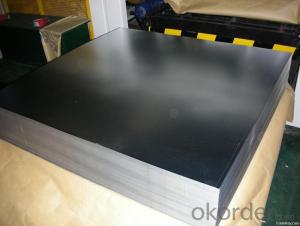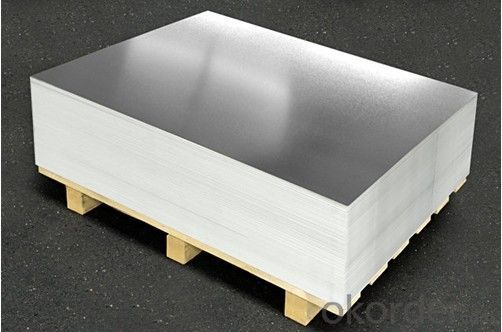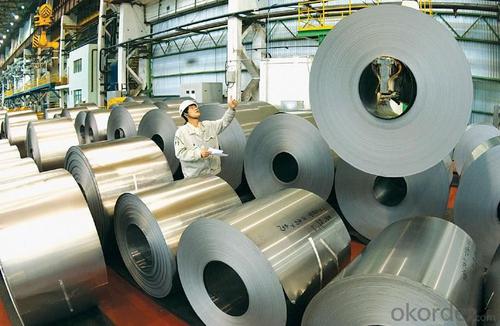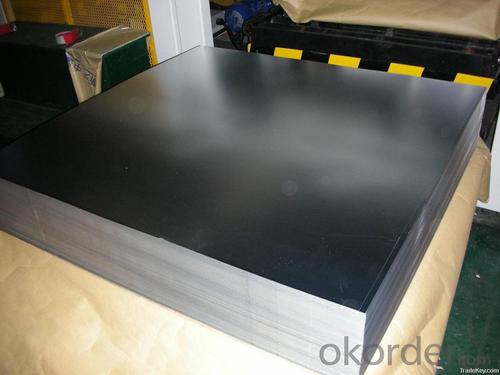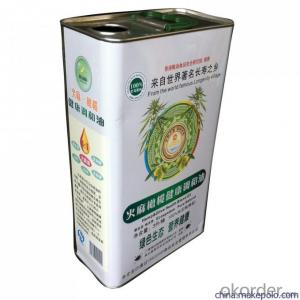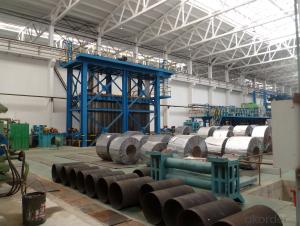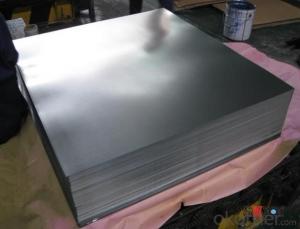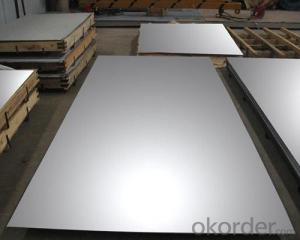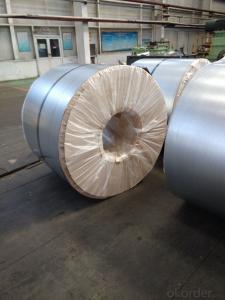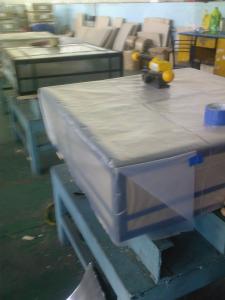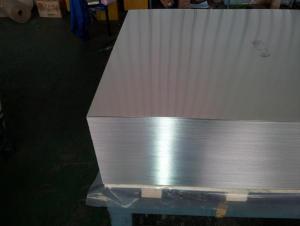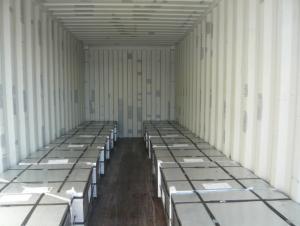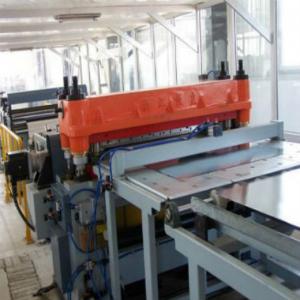Electrolytic Tinplate for Food Cans Packing
- Loading Port:
- Tianjin
- Payment Terms:
- TT OR LC
- Min Order Qty:
- 25 m.t
- Supply Capability:
- 7000 m.t/month
OKorder Service Pledge
OKorder Financial Service
You Might Also Like
1.Structure of Electrolytic Tinplate for Food Cans Packing Description
Electrolytic Tin Plate Coils and Sheets for Foods Metal Packaging, is one thin steel sheet with a coating of tin applied by electrolytic deposition. Tinplate made by this process is essentially a sandwich in which the central core is strip steel. This core is cleaned in a pickling solution and then fed through tanks containing electrolyte, where tin is deposited on both sides. As the strip passes between high-frequency electric induction coils, it is heated so that the tin coating melts and flows to form a lustrous coat.
2.Main Features of the Electrolytic Tinplate for Food Cans Packing
Appearance – Electrolytic Tin Plate is characterized by its beautiful metallic luster. Products with various kinds of surface roughness are produced by selecting the surface finish of the substrate steel sheet.
Paintability and printability – Electrolytic Tin Plates have excellent paintability and printability. Printing is beautifully finished using various lacquers and inks.
Formability and strength – Electrolytic Tin Plates have got very good formability and strength. By selecting a proper temper grade, appropriate formability is obtained for different applications as well as the required strength after forming.
Corrosion resistance – Tinplate has got good corrosion resistance. By selecting a proper coating weight, appropriate corrosion resistance is obtained against container contents. Coated items should meet 24 hour 5 % salt spray requirement.
Solderability and weldability – Electrolytic Tin Plates can be joined both by soldering or welding. These properties of tinplate are used for making various types of cans.
Hygienic – Tin coating provides good and non toxic barrier properties to protect food products from impurities, bacteria, moisture, light and odours.
Safe – Tinplate being low weight and high strength makes food cans easy to ship and transport.
Eco friendly – Tinplate offers 100 % recyclability.
Tin is not good for low temperature applications since it changes structure and loses adhesion when exposed to temperatures below – 40 deg C.
3.Electrolytic Tinplate for Food Cans Packing Images
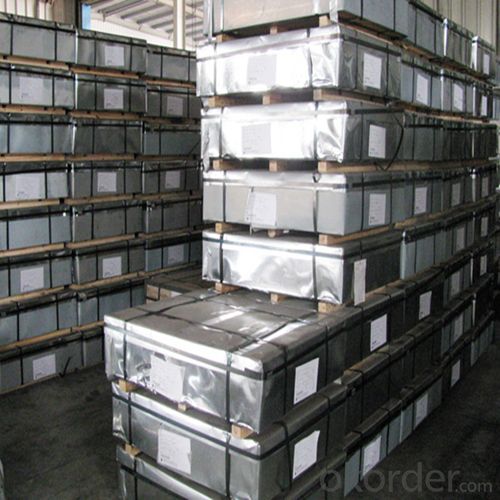
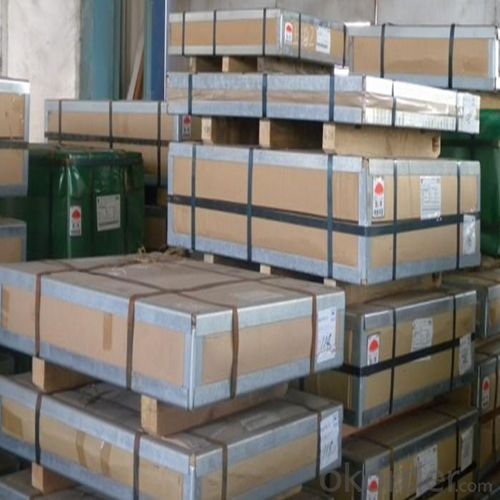
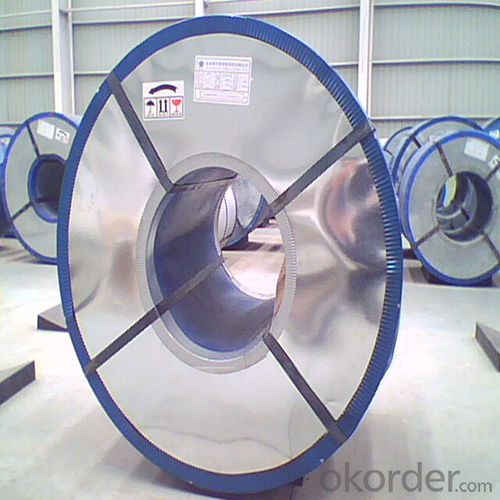
4.Electrolytic Tinplate for Food Cans Packing Specification
Standard | ISO 11949 -1995, GB/T2520-2000,JIS G3303,ASTM A623, BS EN 10202
|
Material | MR,SPCC |
Thickness | 0.15mm - 0.50mm |
Width | 600mm -1150mm |
Temper | T1-T5 |
Annealing | BA & CA |
Coil Inner Diameter | 508mm |
Weight | 6-10 tons/coil 1~1.7 tons/sheets bundle |
Passivation | 311 |
Oil | DOS |
Surface | Finish,bright,stone,matte,silver |
5.FAQ of Electrolytic Tinplate for Food Cans Packing
- How are the Electrolytic Tin Plates specified?
The Electrolytic Tin Plates are specified as per the steel base, extent of tempering, the coating weight, annealing method and the surface finish.
- How many types there are for base steels?
The base steels are of three types: Type MR, L, D
-What your tinplate material is used for ?
Tinplate is widely used for the packaging of products. Such as food cans,
beverage cans, pet cans, closures, general line cans and so on.
Printed Tinplate is offered!!
-How to place .an order or contact you ?
Please send us Email. we will give you a quick response in seconds .
- How is your quality ?
All our quality is prime even the secondary quality . We have many years experience
In this field with serious quality control standard . Advanced equipment, We welcome your visit to our factory .
- Q: Can tinplate be painted or coated with other materials?
- Yes, tinplate can be painted or coated with other materials.
- Q: What are the different types of tin coatings used on tinplate?
- There are primarily three types of tin coatings used on tinplate: electrolytic tinplate (ETP), tin-free steel (TFS), and black plate. ETP is the most common and consists of a thin layer of pure tin electroplated onto the steel substrate, providing excellent corrosion resistance and food compatibility. TFS, on the other hand, is a steel substrate coated with a layer of chromium oxide or chromium oxide and polymer, offering comparable properties to ETP but without the use of tin. Lastly, black plate refers to uncoated steel that can be further processed or coated as per specific requirements.
- Q: Can tinplate be used for packaging perishable goods?
- Yes, tinplate can be used for packaging perishable goods. Tinplate is known for its excellent resistance to corrosion and its ability to provide an airtight seal, making it suitable for preserving the freshness and quality of perishable products such as food and beverages.
- Q: How does tinplate perform in terms of stackability?
- Tinplate performs well in terms of stackability due to its rigid and durable nature. Its flat surface and uniform thickness allow for easy stacking and stability, making it suitable for various storage and transportation applications.
- Q: Can tinplate be used for kitchenware?
- Yes, tinplate can be used for kitchenware. Tinplate is a type of steel coated with a thin layer of tin, which provides corrosion resistance and makes it suitable for food contact applications. It is commonly used for making cans, containers, and other kitchen utensils due to its durability, easy cleaning, and ability to keep food fresh.
- Q: How is tinplate different from aluminum packaging?
- Tinplate and aluminum packaging differ in terms of their material composition, properties, and applications. Tinplate is made from thin sheets of steel coated with a layer of tin, providing excellent corrosion resistance and a shiny appearance. On the other hand, aluminum packaging is fabricated from aluminum, offering lightweight, high strength, and superior resistance to rust or corrosion. Additionally, aluminum is a great conductor of heat and electricity. While tinplate is commonly used for food cans, tin containers, and household products, aluminum packaging is popular for beverage cans, aerosol cans, and various consumer goods.
- Q: How does tinplate perform in terms of printability?
- Tinplate performs exceptionally well in terms of printability. Its smooth surface allows for high-quality printing with excellent color reproduction and sharpness. Additionally, the material's strong adhesion properties ensure that the printed design remains intact and vibrant even after prolonged use.
- Q: Can tinplate be used for bulk packaging?
- Yes, tinplate can be used for bulk packaging. Tinplate is a commonly used material for packaging due to its durability, strength, and resistance to corrosion. It is often used in the food and beverage industry to package products in large quantities efficiently and securely.
- Q: How is tinplate used in the production of aerosol valves?
- Tinplate is used in the production of aerosol valves as it provides a durable and corrosion-resistant material for the valve components. It helps to maintain the integrity of the valve, ensuring a reliable and leak-proof seal. Additionally, tinplate can be easily formed into intricate shapes, allowing for the precise design and functionality required in aerosol valves.
- Q: How does tinplate contribute to the circular economy in the steel industry?
- Tinplate plays a significant role in promoting the circular economy within the steel industry. Due to its exceptional recyclability, tinplate can be easily collected, sorted, and recycled into new products repeatedly without losing its properties. This allows for a closed-loop system where tinplate packaging is collected, recycled, and reintroduced into the market as new packaging, reducing the need for virgin materials and minimizing waste generation. By facilitating the reuse and recycling of tinplate, the steel industry can minimize resource depletion, reduce energy consumption, and decrease the environmental impact associated with production.
Send your message to us
Electrolytic Tinplate for Food Cans Packing
- Loading Port:
- Tianjin
- Payment Terms:
- TT OR LC
- Min Order Qty:
- 25 m.t
- Supply Capability:
- 7000 m.t/month
OKorder Service Pledge
OKorder Financial Service
Similar products
Hot products
Hot Searches
Related keywords


